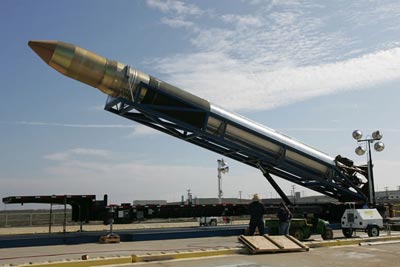SpaceX buys into SSTLby Taylor Dinerman
|
| Few spacecraft manufacturers, large or small, have anything like the broad international customer base of SSTL. |
This deal will not give SpaceX any privileged access to SSTL satellite launch contracts. Historically, most of SSTL’s spacecraft have been launched on Russian rockets. SpaceX hopes to be able to call on SSTL to help ensure that the interfaces between their launchers and payloads are as reliable as humanly possible. SSTL’s experience will be of considerable value in launch platform integration and pre-launch processing. SpaceX hopes to be able to orbit two small satellites at the same time using their medium-sized Falcon 5. The British company could be called on to provide its expertise for this application. That said, this deal will not produce a “strategic alliance” between SpaceX and SSTL, which is probably a good thing. The recent fad for these alliances seems to have more to do with the desire of CEOs to gratify their egos, and with M&A specialists trying to get back to the glory days of the mid-1990s.
After SpaceX has successfully launched their first Falcon 1, they could join with SSTL to offer the Pentagon a series of Falcon 1-Microsat 400 mission packages. This would allow the US military to experiment with payloads for 500-kilogram-class satellites. A long term deal for, say, three missions a year would provide a basis for stable production and would allow both firms to keep their costs under control. Indeed, the Pentagon may want to look at such a combination to help prove out the technology for the troubled T-Sat next-generation communications satellite program.
SpaceX hopes to launch the first Falcon 1 from Vandenberg Air Force Base in California sometime in March. They have not yet completed testing on their Merlin first-stage motor. If all goes well with those tests, they expect to stay on schedule. If all goes well with this first launch, they have three more planned this year: two with Falcon 1, and one for Bigelow Aerospace on the larger Falcon 5. A lot of dreams are riding on this initial flight, and not only for SpaceX and for its CEO, Elon Musk. The whole idea that smaller companies can actually build a vehicle that can reach orbit will be tested.
The relationship between SSTL and SpaceX may be the precursor for a whole series of new investments by the smaller, emerging space companies in each other. There is a lot of talent and creative energy out there. No single company expects to monopolize it. For example, Burt Rutan’s suborbital SpaceShipOne was powered by an innovative hybrid engine, some of whose components were provided by SpaceDev, another small and innovative firm. The entrepreneurial space industry has been making considerable progress in the past few years. It is slowly emerging as a real source of new, cost-effective products. This is the normal way things work in a dynamic capitalist economy.
| The relationship between SSTL and SpaceX may be the precursor for a whole series of new investments by the smaller, emerging space companies in each other. |
The biggest question looming over the industry is: What kind of potential demand exists for their products? Could it be that a demand will one day develop for “personal satellites”? Will individuals actually start buying imagery from commercial remote sensing satellites? How about orbiting casinos or nursing homes in low Earth orbit? The industry has been working on the assumption that if the cost of access to space can be dramatically reduced, the demand will develop. Several studies, particularly last year’s Futron ASCENT market study, seem to indicate this, but it is still mostly speculation.
What is already evident is that human beings have an urge to explore and to expand. Some people have a real need for elbow room, for the wide open spaces that cannot any longer be found on Earth. Ultimately, that is the driving force that someday will create the new off-Earth economy. All the dealmaking and the investment that is going into building this new industry is essentially built on a faith in that undeniable urge. Some businesses succeed by catering to the worst in people’s instincts. The space industry will thrive on appealing, mostly, to what is best and noblest in the human soul.
However, is that a workable business model?
